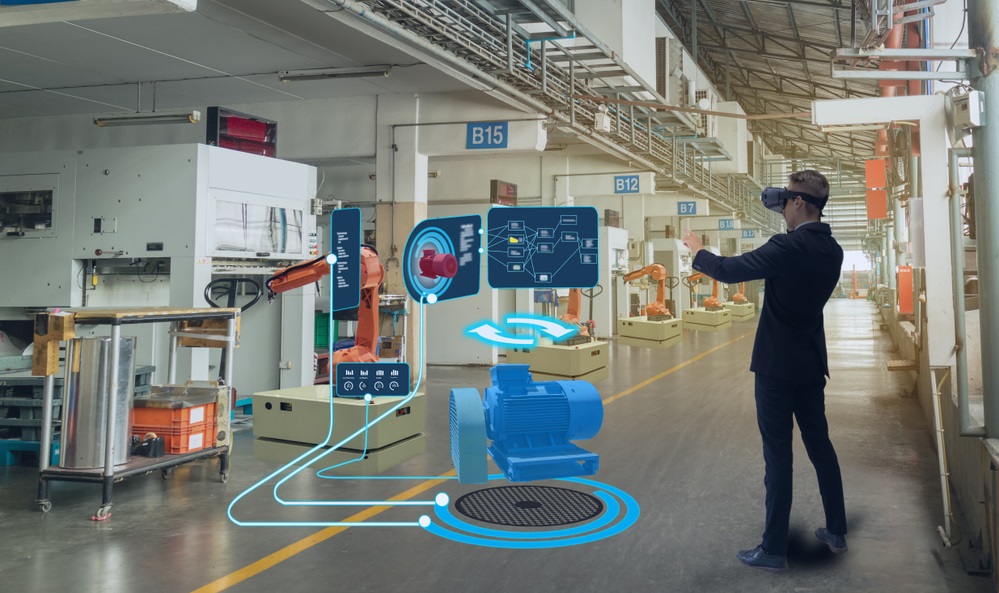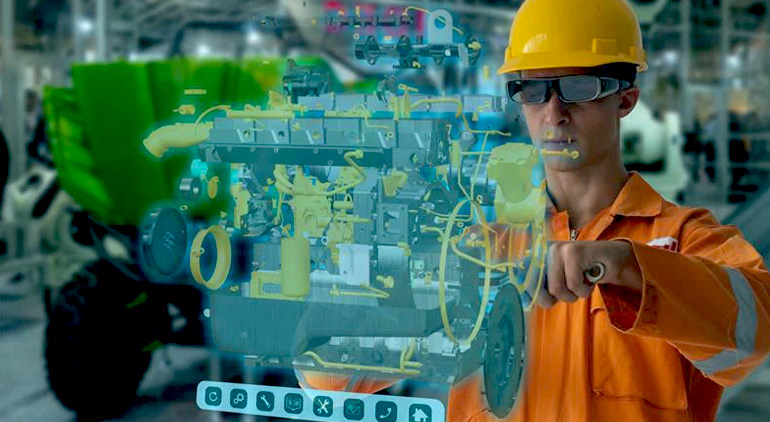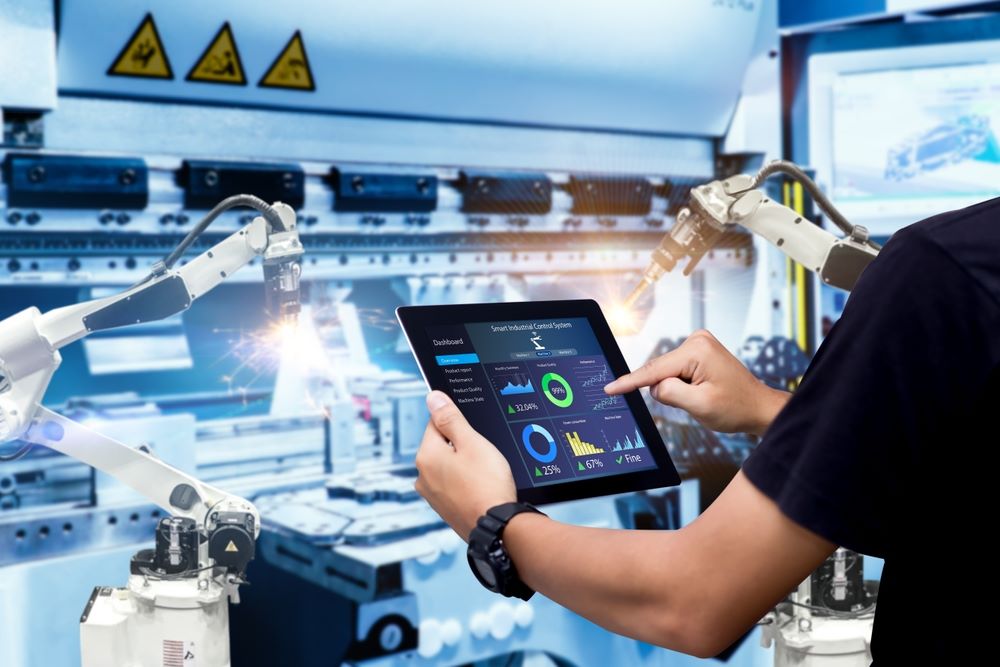IoT in Manufacturing: Use Cases, Benefits and Examples
If there is any one industry that has been under relatively high pressure to adapt and evolve, that would have to be the manufacturing industry. Various businesses and companies are involved in this sector, leading to the production of different types and levels of products and goods.
And there’s been a concerted effort to improve the conditions, over time, mainly so as to smoothen operations and boost revenues.
IoT in manufacturing represents a welcome step in this direction as it actually does seem poised to achieve a lot for what’s required in the industry, all while reducing the costs and effort spent by the organizations involved.
Let’s take a look at how IoT in manufacturing is modernizing this sector – with the convergence of major digital technologies and traditional manufacturing. As it weaves a wave of crucial advantages for manufacturers seeking to boost efficiency and quality in their production efforts.
Modern Advantage: Uncovering IoT Use Cases in Manufacturing

The Industrial Internet of Things is a major umbrella term relating to all the bits and digital tech devices that have been integrated into any industry.
For manufacturing, this refers to all the tools and gadgets that enable the machines and processes involved in various operations with IoT capabilities.
It could be something as simple as connecting the instruments in the production line to the internet for remote monitoring – to outfitting heavy tools and machines with sensors, tracking equipment, and data-collecting smart tools.
This in turn opens the taps on a pool of data to be collected from various sources and then used as per the organization’s requirements.
Here are some important use cases of IoT in manufacturing and its effects on the various processes involved within and outside the factory:
✔️ Integration of Sensors
Lots of machines involved in the production phase ranging from handheld tools to automated equipment and those placed on the main production lines are capable of giving off a lot of data.
However, traditionally, these machines have been optimized mainly for performing menial tasks and any attempt at upgrading them as smart IoT in manufacturing devices has been at a backfoot.
IoT in manufacturing sees these equipment and heavy machinery equipped with sensors. These sensors are attuned to the production process, the equipment, and what task it is supposed to monitor.
Once placed, the sensors start to record data from these machines, relating to things like temperature, energy usage, internal pressure, performance, etc. in real-time.
✔️ Predictive Maintenance

Building on the previous point that IoT in manufacturing starts off the data collection process through sensors, is the fact that it then enables other use cases such as predictive maintenance.
Now predictive maintenance, much as the name entails, refers to the process of ‘predicting’ when to carry out the upkeep or repair work of a machine, obviously before it stops working.
This prediction, from IoT in manufacturing, is enabled by precisely the same data being collected from machines and equipment via sensors or smart tools.
It gives valuable feedback from the production process to the organization, about the state of the machines and major tools. Which in turn allows manufacturers to seamlessly maintain their assets without having to pump the brakes every time for scheduled check-ups.
✔️ Optimizing Supply Chains
As with all manufacturing companies, the supply chains are what is broadly responsible for the movement of raw materials, resources, and completed products.
An organization can have its fleet of transport vehicles and workers dedicated to overseeing this task or it can also rely on B2B professional services.
Whichever is the case, what matters for manufacturers is that these processes enabled by their mode of supply are not suspended.
IoT in manufacturing helps in optimizing this supply chain for businesses in this sector. It begins by empowering the transport and supply facilities with IoT services.
This allows companies to track where their products and resources are, and to also gauge other factors based on that admission. The real-time tracking helps in monitoring the supplied articles and improves logistics – as it keeps the process visible across the chain.
✔️ Automation
Often factories involved in various types of manufacturing, involve activities or operations that have a lot of moving parts while on the production line.
These parts or functions are manually enabled by controllers and human resources who oversee the major functions of the production process.
Now, not all of the manufacturing processes in a factory can be automated on a whim, but IoT in manufacturing does hold a lot of potential in getting there.
For starters, IoT in manufacturing allows manufacturers to make changes to various parameters for the production line based on the data it gathers.
It also allows manufacturers to set and forget variable inputs for a production line, based on the data that it analyzes – so that the equipment can keep producing high-quality products without requiring too many manual inputs like before.
✔️ Sustainable Energy Management
The IIoT in oil and gas is a major step of its own, rightful accord. However, IoT in manufacturing also holds a strong grip on reducing the energy requirements or consumption for various companies.
Monitoring and managing the energy demands of a production line, much less the entire factory is a major task. And without careful monitoring, it could result in the wastage of the energy being supplied and the tasks for which it is intended.
Sustainable energy use and management is a major part of IoT in manufacturing as in addition to monitoring operations and machines, it can also be set up to monitor energy supply.
Energy consumption, when monitored like this, tends to stay under control a lot better and reduces any urgent spikes. Aside from that, it also identifies the areas of production that can see reductions in power draw or can be improved based on their requirements.
These use cases demonstrably prove how the inclusion of IoT in manufacturing has been a game changer for many organizations in the fray.
Almost as AR VR in manufacturing one would say, as digital technologies go. It has emerged as a powerful tool and ultimately helps company owners to ensure that their manufacturing outcomes are better than before, and so are the satisfaction levels of their customers.
Also read: Applications, Examples & Benefits of AI in Manufacturing
Benefits of IoT in Manufacturing: Redefining the Industry
In today’s digitized world, almost 90% of manufacturers firmly believe that adopting modern technologies is a major proponent of benefits.
Benefits that easily outweigh any purported risks to traditional manufacturing practices and procedures. It’s a great way to boost efficiency and productivity, with the market for IoT in manufacturing set to reach around $88 billion by 2026.
Let’s take a look at some of its benefits to the manufacturing world:
✔️ Reduces Manufacturing Costs
Bringing down the costs to produce one’s products while maintaining the level of efficiency and quality is paramount and IoT in manufacturing succeeds at both.
It’s application through predictive maintenance makes sure that any crucial piece of equipment doesn’t face unforeseen downtimes thereby incurring major costs. But instead, allows for its condition to be monitored and fixed as per projected deteriorations.
Efficient use of energy further helps bring down the costs associated with manufacturing. A lower consumption rate leads to lower costs incurred.
IoT–optimized energy control and management reduces occasions where energy might get wasted, based on its analysis of real-time data.
✔️ Enhances Overall Quality
Since IoT in manufacturing improves, automates, and strengthens production processes or major operations through its data analytics, it also improves the overall quality.
Real-time monitoring and stricter control allow manufacturers to prevent defective products from being made. It improves product quality by identifying issues in the operations from the data it collects through its sensors.
Increased monitoring and control over the production process in real-time through sensitive and smart IoT sensors and devices lets manufacturers to enforce greater standards.
Also, by tweaking parameters to match the important machines and gadgets' pre-set values, the IoT devices can instantly inform the owner about any deviations in the process.
✔️ Worker’s Safety and Secure Practices
 Another side-effect that works wonderfully in favor of manufacturers is that the real-time monitoring of heavy machinery and mechanical processes reduces the chances of accidents.
Another side-effect that works wonderfully in favor of manufacturers is that the real-time monitoring of heavy machinery and mechanical processes reduces the chances of accidents.
That’s because IoT in manufacturing extends to instruments operating in hazardous settings and can raise the alarm if safety protocols or limits aren’t being met.
Not only does this boost safety levels but the reduction in risk leads to an automated reduction of costs associated with workplace security problems.
IoT in manufacturing-enabled monitoring makes sure that the manufacturers are aware of the safety procedures and if they are being met or not in mock drills.
Easier compliance through secure practices will also bring down the brunt faced by the company as penalties or fines.
✔️ Higher Levels of Productivity
The production or manufacturing of any product in a factory setting happens either in particular stages or as cycles.
IoT in manufacturing shortens the time these stages take to complete, through streamlined operations and automated work processes. This level of efficiency allows for products to reach the market faster than possible before with traditional manufacturing.
Equipping traditional machines and manufacturing processes with IoT capabilities has also enabled companies to make adjustments to their operations.
They have proven to be able to automate certain tasks that save them time and labor. Increased monitoring has allowed manufacturers to confidently raise production rates, with sensors in place to warn for any failures or safe points being crossed.
Overall, these are some of the important advantages that IoT in manufacturing brings to the table for various companies and businesses in the industry.
The benefits are surely tangible, but they’re not the only value gained out of this whole situation by manufacturers.
Owing to the technical prowess enabled by IoT and others such as 3D simulation in manufacturing: The product quality is better, the operations carry on smoother, and overall, the customers are happy with their experiences of using the finished products of the said brand or company.
Decoded: Top IoT in Manufacturing Examples and Pioneers
If you’ve heard about Microsoft’s Hololens in manufacturing, then you’re already aware of how certain business houses and tech companies are collaborating to integrate IoT in manufacturing.
Now that we’ve learned more about its use cases and benefits in the industry, here are some examples of companies that are leading the fray – in utilizing IoT in manufacturing to achieve their business goals or interests:
✔️ Siemens – Digital Twins
 Siemens is experimenting with IoT to create a "digital twin" of its operations and goods. This virtual version of the real factory or product may be used to mimic and optimize manufacturing processes, forecast maintenance needs, and improve quality control.
Siemens is experimenting with IoT to create a "digital twin" of its operations and goods. This virtual version of the real factory or product may be used to mimic and optimize manufacturing processes, forecast maintenance needs, and improve quality control.
For example, their company is utilizing its digital twin for optimum wind turbine fabrication. Siemens can discover and fix possible bottlenecks in the real world by replicating numerous manufacturing situations in the digital twin.
This has enabled Siemens to minimize manufacturing times and expenses while simultaneously enhancing wind turbine quality. All of this, by utilizing digital twins in manufacturing.
✔️ Bosch – Smart Factories
Bosch is developing smart factories utilizing IoT in manufacturing. Sensors in these facilities collect data on all parts of the manufacturing procedure, which includes everything from the chain of distribution to the assembly line.
This data is then utilized to optimize the production process and increase effectiveness, quality, and safety.
For instance, their organization uses smart factories to manufacture car components. Bosch has been able to minimize production time and costs while enhancing the quality of its automobile components by tracking the movement of parts through the plant and tracking the state of all production equipment.
✔️ General Electric – Predictive Maintenance
IoT in manufacturing is also being used by General Electric to provide predictive maintenance alternatives to maintain its manufacturing machinery.
Sensors are used in these solutions to gather data on the status of the equipment and forecast when repair is required. This reduces unwanted downtime and increases asset longevity.
GE, for example, uses predictive maintenance technology to monitor the health of its aircraft engines. GE may minimize costly engine problems by forecasting when maintenance is required.
This has enabled GE to save billions in maintenance expenditures while also improving the safety and dependability of its aircraft engines.
✔️ Tesla – Automating Production

Many automobile manufacturers are beginning to utilize IoT in manufacturing for automating their production process as well as gathering data on how their automobiles are being utilized.
Tesla, for example, uses IoT sensors for tracking the transit of components throughout the plant as well as to check the quality of production equipment. This data is then utilized to detect and fix bottlenecks and increase manufacturing process efficiency.
IoT is also being utilized by Tesla to collect data on how their cars are being used. Like where it employs IoT sensors to monitor car performance and find areas for improvement. This information is then utilized to create new and better automobiles.
Building the Future of IoT in Manufacturing
These are some of the examples of companies that are leading the fray in integrating IoT in manufacturing processes. They may be the pioneers, but more are joining the club as we are seeing even more transformative applications of IoT being developed for the industry.
Adding to that is the fact that nearly 60% of manufacturers nowadays see IoT as a requisite for pushing the digitization of traditional industrial operations.
And 50% of respondents from American companies today agree that IoT’s capabilities can boost employee and operational productivity.
If you are in a similar spot but don’t know exactly how you would go about implementing IoT devices and applications for your manufacturing needs, then we’ve got you covered.
At EDIIIE, our team has always excelled at driving efficiency and can help transform how you develop your product offerings. Give us a call and learn how the power of data can be harnessed for navigating success in the manufacturing sector, through strong insights and informed decisions.






